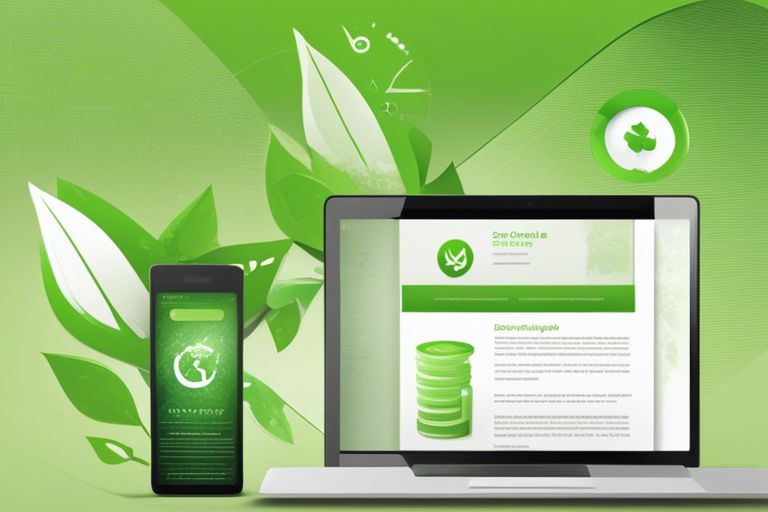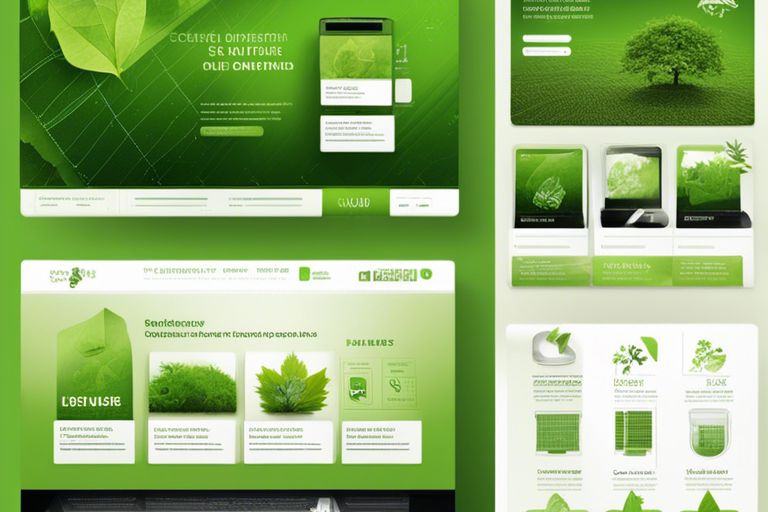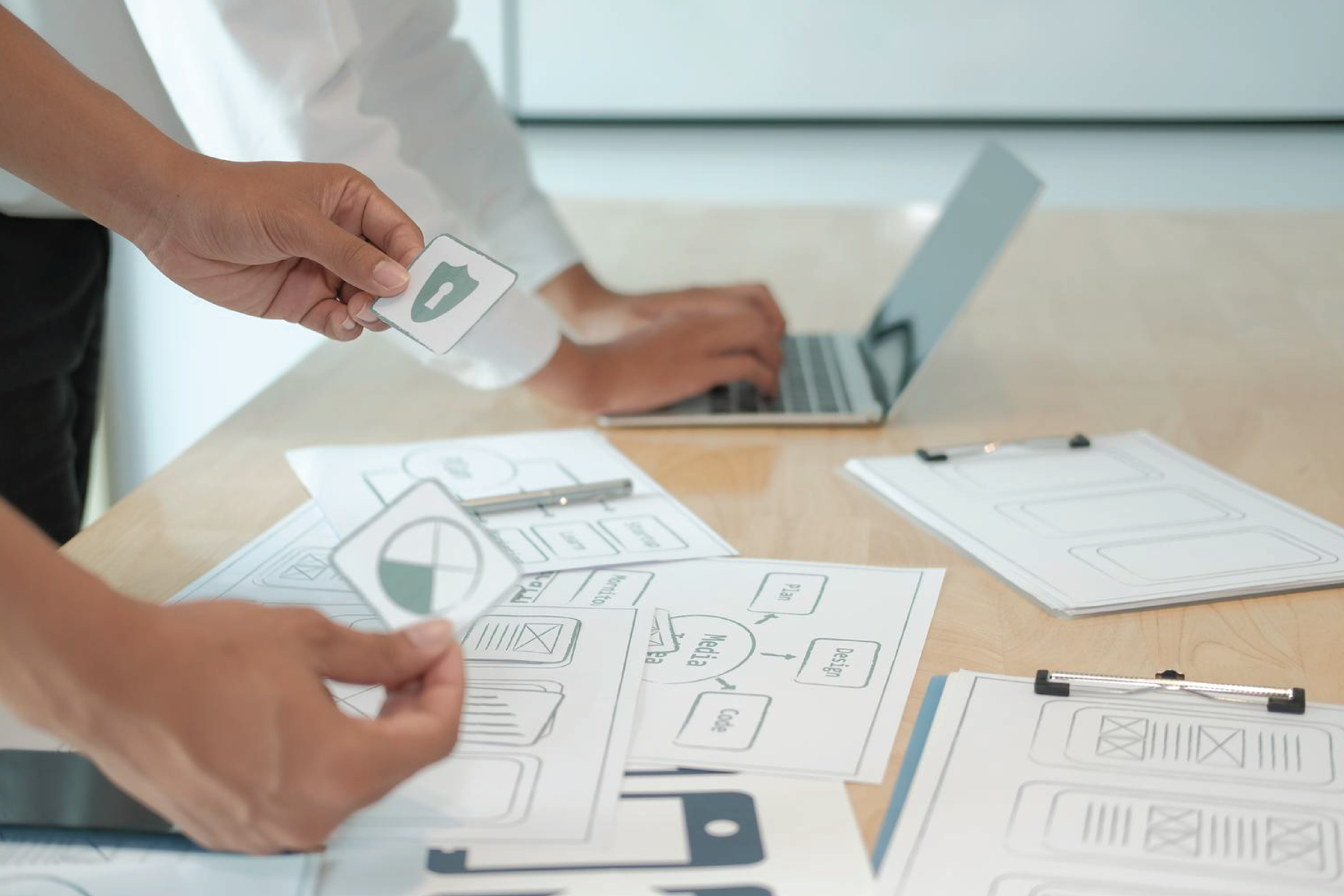Embracing sustainable design practices is essential in today’s world, as consumers are increasingly seeking ethical and environmentally friendly products and services. When it comes to web and logo creations, there are various ways to incorporate sustainability into your designs. By using eco-friendly color palettes and optimizing images for faster loading times, you can make a significant impact. In this blog post, we will explore practical tips and strategies for integrating sustainable design principles into your web and logo creations. By doing so, you can contribute positively to the environment while creating visually stunning and effective designs.
Key Takeaways:
- Consider sustainable materials: Look for eco-friendly options when designing your website and logo, such as using recycled or biodegradable materials.
- Optimize energy efficiency: Create designs that are optimized for energy efficiency, such as using minimal graphics and clean code to reduce the carbon footprint of your website.
- Educate and inspire: Use your platform to educate and inspire others about sustainable design practices, and encourage them to make eco-friendly choices in their own designs.

Sustainable Design Strategies in Web Design
Obviously, sustainable design strategies in web design are essential for reducing the environmental impact of digital creations. By incorporating sustainable practices into web design, you can minimize energy consumption and promote a more eco-friendly online presence.
It is abundantly clear that the integration of sustainable strategies in the field of web design is of utmost importance in order to effectively mitigate the detrimental effects that digital creations can have on the environment. By actively embracing and implementing sustainable practices within the realm of web design, one has the ability to significantly reduce energy consumption, thus fostering a more environmentally conscious online presence that aligns with the principles of eco-friendliness and sustainability.
Optimizing for Performance and Efficiency
Designing for performance and efficiency is crucial in sustainable web design. By optimizing the code, compressing images, and minimizing HTTP requests, you can reduce the energy required to load and run your website. Consider using efficient coding practices and optimizing multimedia content to ensure a more sustainable digital footprint.
Choosing Eco-Friendly Web Hosting Providers
Choosing a eco-friendly web hosting provider is an important step in promoting sustainability in web design. Look for hosting companies that utilize renewable energy sources, have energy-efficient data centers, and offer carbon offset programs. By choosing an eco-friendly web hosting provider, you can reduce the environmental impact of your website and contribute to a more sustainable online ecosystem. Sustainable web hosting providers can also offer benefits such as faster loading times, better security, and reliable customer support.
Eco-Conscious Logo Design
Any business looking to incorporate sustainable design into their branding should start with their logo. The logo is often the first and most memorable representation of a company, so it’s important to make it eco-conscious and reflective of the company’s values. Here are some key considerations for creating an eco-friendly logo design.
Material Considerations for Physical Branding
Material choices play a significant role in the sustainability of a logo. When designing a physical logo for products or signage, opt for materials that are eco-friendly, such as recycled paper, biodegradable plastics, or sustainably sourced wood. These materials not only reduce the environmental impact of your branding but also communicate a commitment to sustainability to your audience.
Creating Logos with Timelessness and Versatility
One of the most eco-conscious decisions a business can make is to create a logo with timelessness and versatility. By choosing a design that is timeless, it eliminates the need for frequent rebranding, reducing the waste associated with producing new logos. Additionally, a versatile logo that can adapt to different mediums and applications ensures that it can be used across various platforms without the need for constant redesign.
With a timeless and versatile logo, businesses can maintain their brand identity while minimizing their environmental impact and reducing the resources required for rebranding efforts. This approach aligns with a commitment to sustainability and environmental responsibility while creating a lasting and impactful brand image.
Tools and Resources for Sustainable Design
Not only is sustainable design important for our environment, but it is also becoming increasingly popular and in-demand within the creative industry. As a result, there are a variety of tools and resources available to help designers incorporate sustainable practices into their work.
Software and Platforms for Green Design
Tools such as Adobe Creative Cloud and Canva offer features and templates specifically tailored for sustainable design. These platforms provide eco-friendly color palettes, energy-saving settings, and options to reduce paper waste. Additionally, web design platforms like WordPress and Wix offer plugins and themes that prioritize energy efficiency and sustainable web development.
Online Communities and Support for Sustainable Practices
Communities such as Sustainable Design Forum and Eco Warriors provide valuable resources, forums, and networking opportunities for designers looking to integrate sustainable practices into their work. These communities offer support, guidance, and access to like-minded individuals who are committed to eco-friendly design principles, as well as the latest trends and advancements in sustainable technology and materials.
Implementing and Promoting Sustainability
Now that you have integrated sustainable design principles into your web and logo creations, it is crucial to actively promote and implement these practices in your business. This will not only help to differentiate your services in the market but also contribute to the growing movement towards sustainability in the design industry.
Implementing sustainability in your business involves educating your clients on the value of sustainable design and marketing your sustainable design services to reach a wider audience.
Educating Clients on the Value of Sustainable Design
Implementing sustainable design practices is not enough; it is essential to educate your clients on the value and benefits of these principles. This can include showcasing how sustainable design can positively impact their brand image, customer perception, and long-term cost savings. By providing concrete examples and case studies, you can help your clients understand the tangible benefits of incorporating sustainability into their web and logo designs.
Marketing Your Sustainable Design Services
The key to promoting your sustainable design services lies in effective marketing strategies. The first step is to clearly communicate the sustainable practices you have integrated into your design process on your website and marketing materials. Additionally, highlight the environmental and social benefits of sustainable design, such as reduced carbon footprint, ethical sourcing of materials, and support for local communities. By incorporating keywords such as “sustainability,” “eco-friendly,” and “green design” into your marketing efforts, you can attract clients who are specifically seeking sustainable design services.
Sustainability in design is a growing trend, and by positioning your business as a leader in this movement, you can capture the attention of clients who prioritize environmental and social responsibility in their branding and design efforts.
Conclusion
Considering all points, it is clear that incorporating sustainable design principles into web and logo creations is not only feasible, but also essential in today’s environmentally conscious world. By implementing strategies such as using eco-friendly color palettes, optimizing website performance to reduce energy consumption, and employing minimalist designs that promote longevity, creators can significantly reduce their ecological footprint. Furthermore, by ensuring that the materials used are ethically sourced and easily recyclable, sustainable design can contribute to a more environmentally friendly digital landscape. By making conscientious choices in the creation of web and logo designs, we can contribute to a more sustainable future while still producing visually appealing and effective branding and marketing materials.
FAQ
Q: What is sustainable design in web and logo creations?
A: Sustainable design in web and logo creations involves integrating environmentally friendly and socially responsible practices into the design process. This can include using renewable resources, reducing waste, and considering the long-term impact of the design on the environment.
Q: How can I incorporate sustainable design into my web creations?
A: You can incorporate sustainable design into your web creations by using energy-efficient web hosting, optimizing images and code to reduce load times and energy consumption, and utilizing sustainable web design principles such as minimizing unnecessary elements and using renewable resources.
Q: What are some ways to integrate sustainable design into logo creations?
A: When creating logos, you can integrate sustainable design by using eco-friendly and non-toxic materials for printed materials, incorporating minimalist and timeless designs to reduce the need for frequent rebranding, and considering the environmental impact of production and distribution processes.


